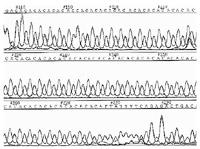Genetic detection of new pathogenic viruses
We all have a risk of blood transfusion from time to time. We always expect that blood is “clean”, that is, without microorganisms. More and more new microorganisms are being identified in recent years, some of which are transported relatively easily by blood. Some of them produce hepatitis, such as hepatitis C virus (CHB), hepatitis G virus (GHB) and newly discovered TTV or “Transfusion-Transmitted virus”, harmful viruses or pathogens for humans.
On the other hand, these viruses, in addition to blood transfusions, can be introduced into the human being and transmitted in a human way by means related to the parenteral pathway: shared syringes, common devices used in the realization of dialysis, surgical equipment, etc. Some of these pathways are, therefore, those that may be inside the hospital, and it is said that people who get this infection are the ones who catch nosocomial infections, since they have included the infection inside the hospital and also by the same way. On the other hand, sexual transmission and transmission from mother to child (so-called vertical transmission) is also possible. Knowing what the transmission mechanism is, therefore, very important to cut or remove this pathway as soon as possible.

As for detection methods, in the case of CHB, its identification can be performed by serological tests, that is, by the appearance or not of antibodies, but this information does not fully indicate the state of the virus, if it is actively replicated. In the case of the other two viruses mentioned, currently there is no serological evidence or the only one that exists (in the case of GHB) is not entirely reliable. Therefore, it is necessary to look for agile and effective methods to identify these viruses. At present the fastest route is the methods that detect the genome itself. To do this, a chained polymerase reaction (PCR) technique amplifies a part of the genome and then visualizes the nucleotide sequence of this part using the automatic sequencer.
The sequencer allows us to read the same genome and analyze the genotypes that appear in each virus. Sequencing also allows us to detect changes or mutations in the genome. In this way, it is possible to check whether the aforementioned viruses move or change when they are inside the patient or to measure the variability of one patient to another. These changes result in the so-called genetic distance between patients' internal viruses. Through the use of computer programs, genetic trees can be built that form these genetic distances, observing in a sick way the equality between viruses. The closer the patient is in two genetic trees, the more similar the viruses inside and what can be deduced is if the transmission or contamination pathway has been the same, for example if the nosocomial infection has occurred through a device or if the same syringe has been used in patients to administer anesthesia, etc.
Our team therefore aims to develop agile identification methods for CHB, GHB and TTV viruses, and to analyze different population groups (blood donors, intravenous drug addicts, hemodialized, with hepatitis). Once the prevalence rates of the three viruses mentioned in these groups of our territory and their genotypes have been defined, we will detect the genetic variability of the viruses in a sick way. If we compare the results in our territory with other international locations, it can be determined that there is a different genotype geographically and much more important, clinically, in order to find a relationship between genotype and clinic. With all of them it is intended to check which are the routes of transmission or transmission of viruses and confirm the existence of nosocomial infection. This information will serve physicians and hospital authorities to take the necessary preventive measures and eliminate these pollution pathways.





